A Georgian Skateboarding Story: From VHS Tapes to a Thriving Modern Scene
Skateboarding in Tbilisi, Georgia, is a story of growth, resilience, and unexpected blooms in a concrete landscape. This vibrant scene, now capturing international attention with projects like the video “Puri: Where Have All The Flowers Gone?”, has emerged from humble beginnings. For those unfamiliar, the question “Where have all the flowers gone?” might seem poetic or even melancholic. In the context of Tbilisi skateboarding, it hints at a transformation – the blossoming of a subculture in a place where it was once scarce, a vibrant scene now flourishing amidst the city’s unique backdrop. This is the story of how skateboarding took root in Tbilisi, navigated challenges, and ultimately blossomed into the dynamic community we see today, captured in the compelling new skate video project.
The early days of skateboarding in Tbilisi were marked by scarcity and passion. Lexo Sharangia, a key figure in the Georgian skate scene, recalls its nascent stages around 2003. “Skateboarding is relatively new in Tbilisi, and in Georgia as a whole,” Lexo explains. “It only started around 2003, when a small group of friends, including myself, started skating regularly, learning tricks and embracing skateboarding culture.” Imagine a world before ubiquitous internet access, where skateboarding knowledge wasn’t instantly available at your fingertips. For Lexo and his peers, discovery meant seeking out VHS tapes and navigating nascent websites to grasp this exciting new culture. RB Umali’s Mixtape for Zoo York became a seminal influence, its impact resonating deeply. Information was precious, shared through printed articles passed among friends, fostering a collective understanding and enthusiasm. These early adopters had to be resourceful, even hand-delivering information to ensure everyone was connected to the burgeoning scene.
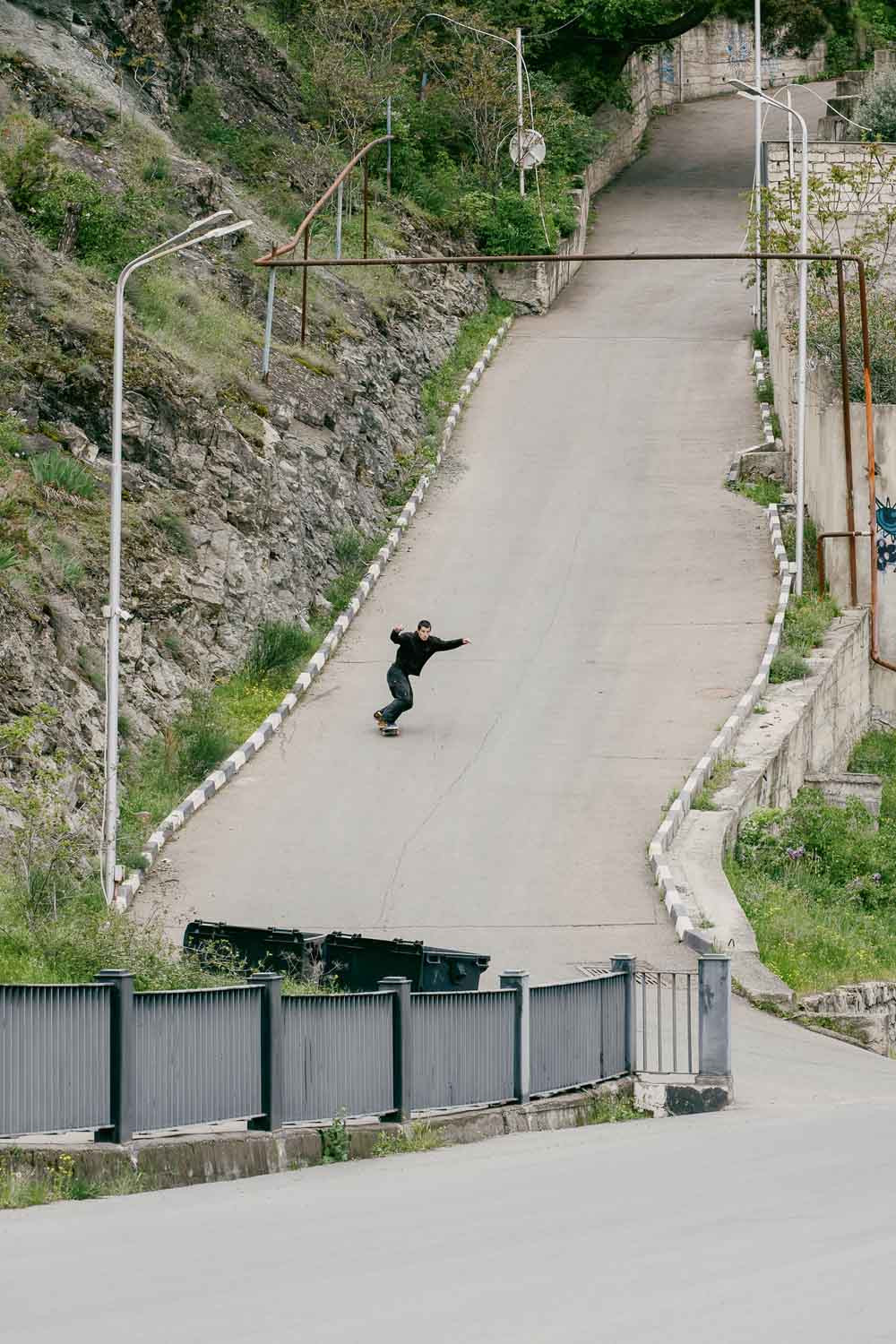 Deni Zakaev executes a backside 50-50 in Tbilisi, showcasing the city’s evolving skate scene. Photo by Ilya Kelarev.
Deni Zakaev executes a backside 50-50 in Tbilisi, showcasing the city’s evolving skate scene. Photo by Ilya Kelarev.
Finding the essential equipment was another hurdle in the early Tbilisi skate scene. With no local skate shops, obtaining boards and parts required ingenuity. Lexo recounts participating in school exchange programs specifically to purchase skateboarding gear abroad. Friends entrusted him with funds to bring back boards, highlighting the dedication to the sport. Even second-hand shops became treasure troves, supplied from the US and Europe, occasionally yielding branded skate footwear and clothing. This resourceful practice of seeking out affordable options continues to this day, reflecting the economic realities for many in Georgia.
While skateboarding enjoys global popularity now, its initial reception in Tbilisi wasn’t always welcoming. The streets of Tbilisi in those early years were sites of confrontation. “While today skateboarding is enjoying unseen popularity globally, it led to many confrontations and fights in the early years in the streets of Tbilisi – some skaters even got stabbed for refusing to give up their boards,” Lexo reveals, painting a stark picture of the challenges faced. However, the narrative shifts towards progress. Tbilisi has evolved, becoming increasingly skate-friendly. The city’s landscape, a blend of Soviet-era architecture and modern developments, now offers a diverse range of skate spots. Referencing the pre-COVID Levi’s Europe video provides a benchmark for this transformation. The city now boasts a skateable route from Turtle Lake, down Chavchavadze Avenue, past the Philharmonic building, and culminating at the Dedaena skatepark, demonstrating a significant improvement in the city’s skateboarding infrastructure and acceptance.
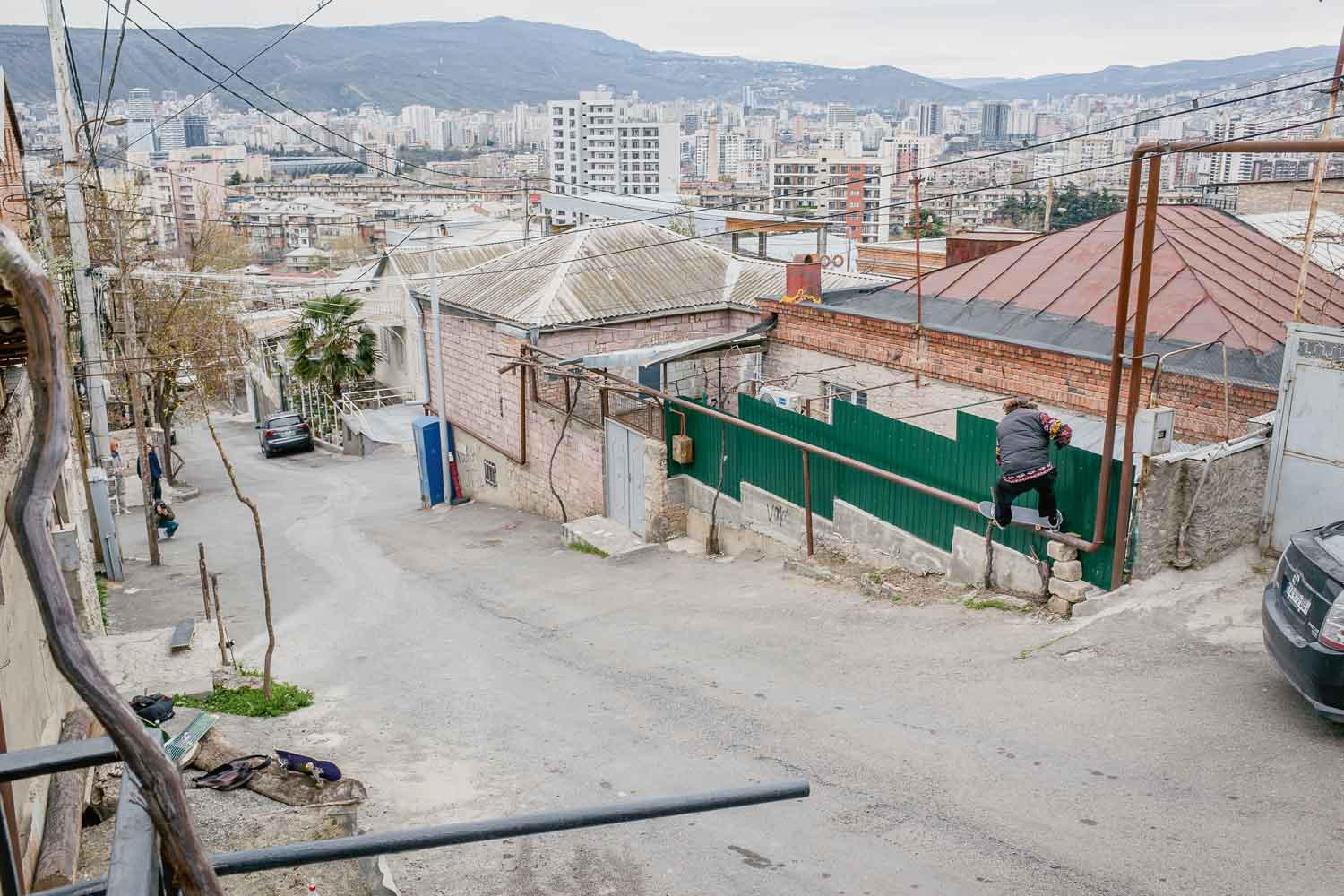 Roman Ivanov performs a frontside 5-0 in Tbilisi, contributing to the city’s growing reputation as a skate destination. Photo by Valera Leto.
Roman Ivanov performs a frontside 5-0 in Tbilisi, contributing to the city’s growing reputation as a skate destination. Photo by Valera Leto.
Roman Ivanov’s connection to Tbilisi further enriches this narrative of growth. Meeting Lexo years prior during a skate trip, Roman returned not just to skate but to contribute to the city’s infrastructure. He played a vital role in building Tbilisi’s first proper skatepark in the historical center. While his recent visits are officially for skatepark construction, his passion extends to filmmaking. This passion, combined with Dmitry Kononov’s filming expertise, has culminated in the “Puri” video project, a testament to their dedication and the evolving Tbilisi scene.
The recent geopolitical landscape, specifically the Russian invasion of Ukraine, has inadvertently contributed to Tbilisi’s skateboarding scene. An influx of young people seeking refuge in Georgia has brought diverse perspectives and talents, including skaters. This influx is reflected in the diverse group featured in the “Puri” video. With extended stays and freedom to explore, these skaters have deeply explored Tbilisi, uncovering new spots and embracing its unique urban terrain. Tbilisi’s hills, with their distinct character, have become a playground for these new arrivals. The city is poised to solidify its place within the European skate scene, offering a unique blend of culture and skateable environments.
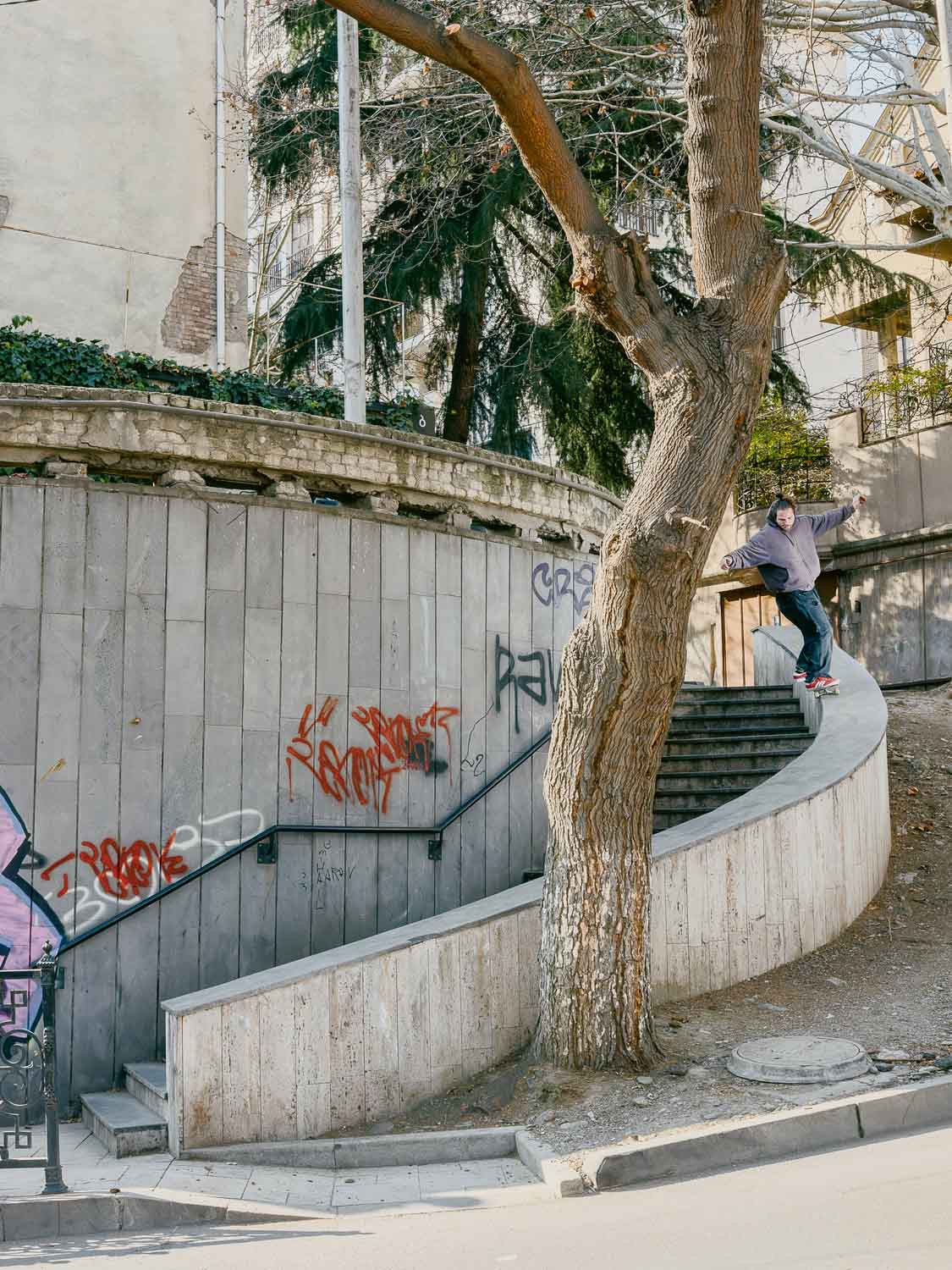 Eugene Aravin grinds a frontside 50-50 in Tbilisi, showcasing the skills of the skaters drawn to the city. Photo by Ilya Kelarev.
Eugene Aravin grinds a frontside 50-50 in Tbilisi, showcasing the skills of the skaters drawn to the city. Photo by Ilya Kelarev.
Roman Ivanov shares his personal journey with Tbilisi, providing a different perspective on the city’s allure. His childhood visits were followed by a pivotal skate trip in 2017. Initially relying on Patrik Wallner’s ‘Visual Traveling’ video for spot inspiration, Roman’s first trip focused on well-known central locations. “On that occasion, we did not have anybody that would guide us through the city so we skated already known/touristic spots located in the centre of Tbilisi,” Roman explains. They prioritized filming, sticking to main streets and minimizing exploration beyond familiar territory. Wallner’s video effectively showcased Tbilisi’s architecture and well-maintained skate spots, serving as their primary guide.
Beyond the skate spots, Roman was captivated by Tbilisi’s atmosphere. He appreciated the relaxed pace of life, the warmth of the people, and, of course, the globally renowned Georgian cuisine. “During that week in Tbilisi rather than exploring the local skate scene, I enjoyed the local pace of life, communicating with simple and outgoing people and of course eating world-renowned Georgian cuisine – super tasty and easily affordable,” Roman recalls, highlighting the city’s holistic appeal.
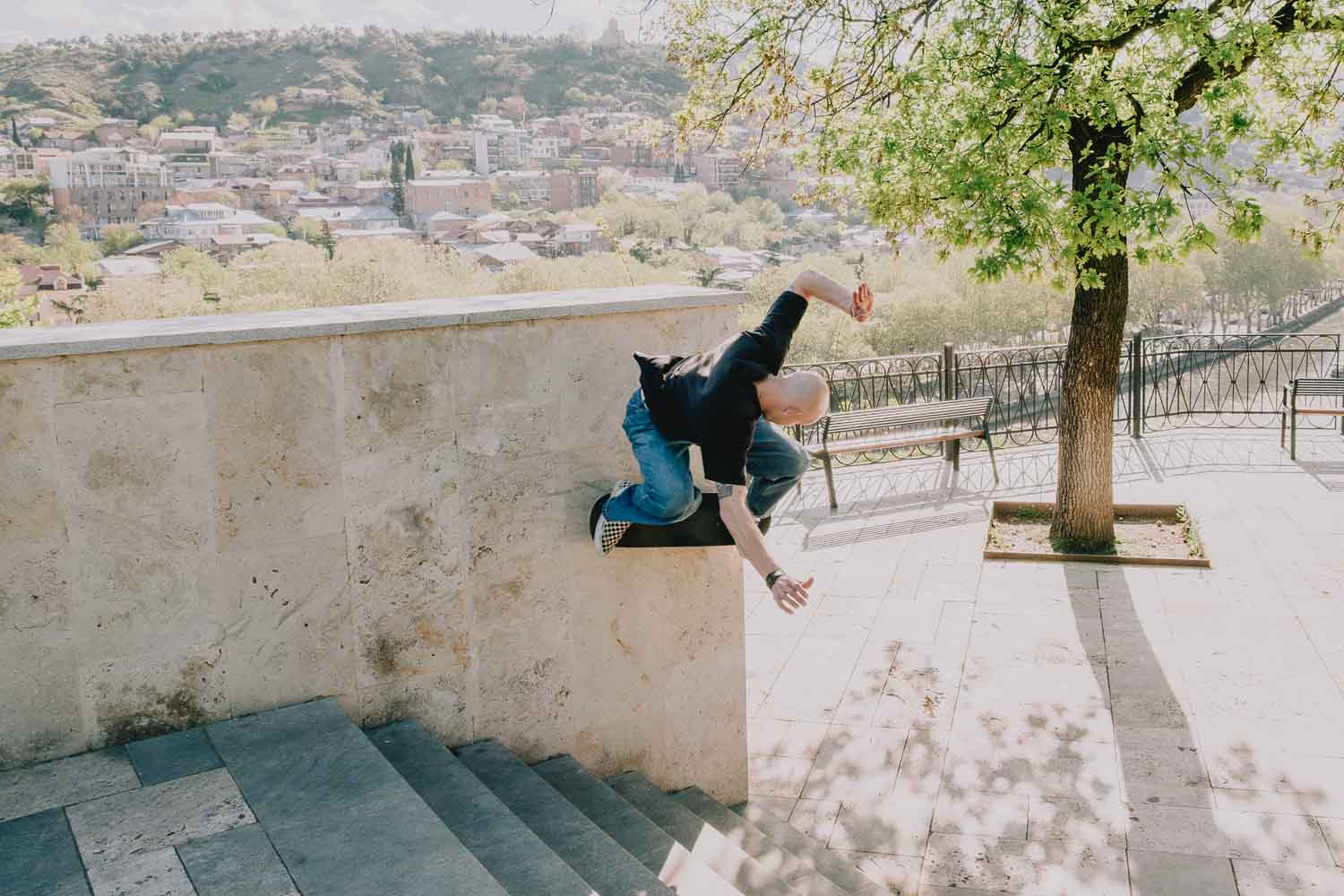 Ilya Kelarev executes a backside wallride in Tbilisi, demonstrating the innovative skateboarding happening in the city. Photo by Roman Ivanov.
Ilya Kelarev executes a backside wallride in Tbilisi, demonstrating the innovative skateboarding happening in the city. Photo by Roman Ivanov.
Upon returning to Moscow, Roman’s enthusiasm for Tbilisi was infectious. He shared stories of his skate trip, emphasizing its accessibility and aiming to inspire a return visit with a larger group. “Back at home, in Moscow, I told all my friends the story of our interesting skate trip to the amazing capital of Georgia – Tbilisi, emphasising that it is not that far away, obviously trying to attract some interest and achieve my dream of going back with a group of friends for a longer and a more productive stay,” Roman states, illustrating his growing connection with the city.
Two years later, in 2019, Roman’s vision materialized. He and his team manager, Kirill Korobkov, embarked on a skate trip to Tbilisi. Kirill’s previous visits made convincing him easier. This trip was envisioned as a “warm-up” after the Russian winter, a more relaxed and exploratory experience. True to Georgian tradition, their first priority was indulging in local cuisine – Khinkali, Khachapuri, and other delights. Fueled by Georgian hospitality and food, they connected with the local skate scene at Tbilisi’s then-only skatepark. This trip proved incredibly productive, solidifying Roman’s affection for Tbilisi. “Long story short, this trip turned out to be really fruitful. We skated and filmed a lot, we walked a lot around the city, met a lot of people and this was the time I fell in love with Tbilisi,” Roman reminisces, marking a turning point in his relationship with the city.
 Roman Ivanov performs a boardslide in Tbilisi, capturing the city’s unique skate spots and vibrant culture. Photo by Ilya Kelarev.
Roman Ivanov performs a boardslide in Tbilisi, capturing the city’s unique skate spots and vibrant culture. Photo by Ilya Kelarev.
It was during this 2019 trip that Roman’s bond with Lexo deepened. He recognized Lexo’s unwavering commitment to Georgian skateboarding. Lexo’s role as a guide for visiting skaters, a liaison with city authorities, and a champion for healthy skateboarding development became apparent. “It was during this trip that I met Lexo, a person who is really devoted to skateboarding and spares no effort to help it develop in Georgia,” Roman acknowledges, emphasizing Lexo’s crucial role. Roman was deeply inspired by Tbilisi’s potential, its unique landscape, architecture, and atmosphere. He felt the city deserved greater recognition within the skateboarding world. However, the pandemic intervened, postponing his plans for a return.
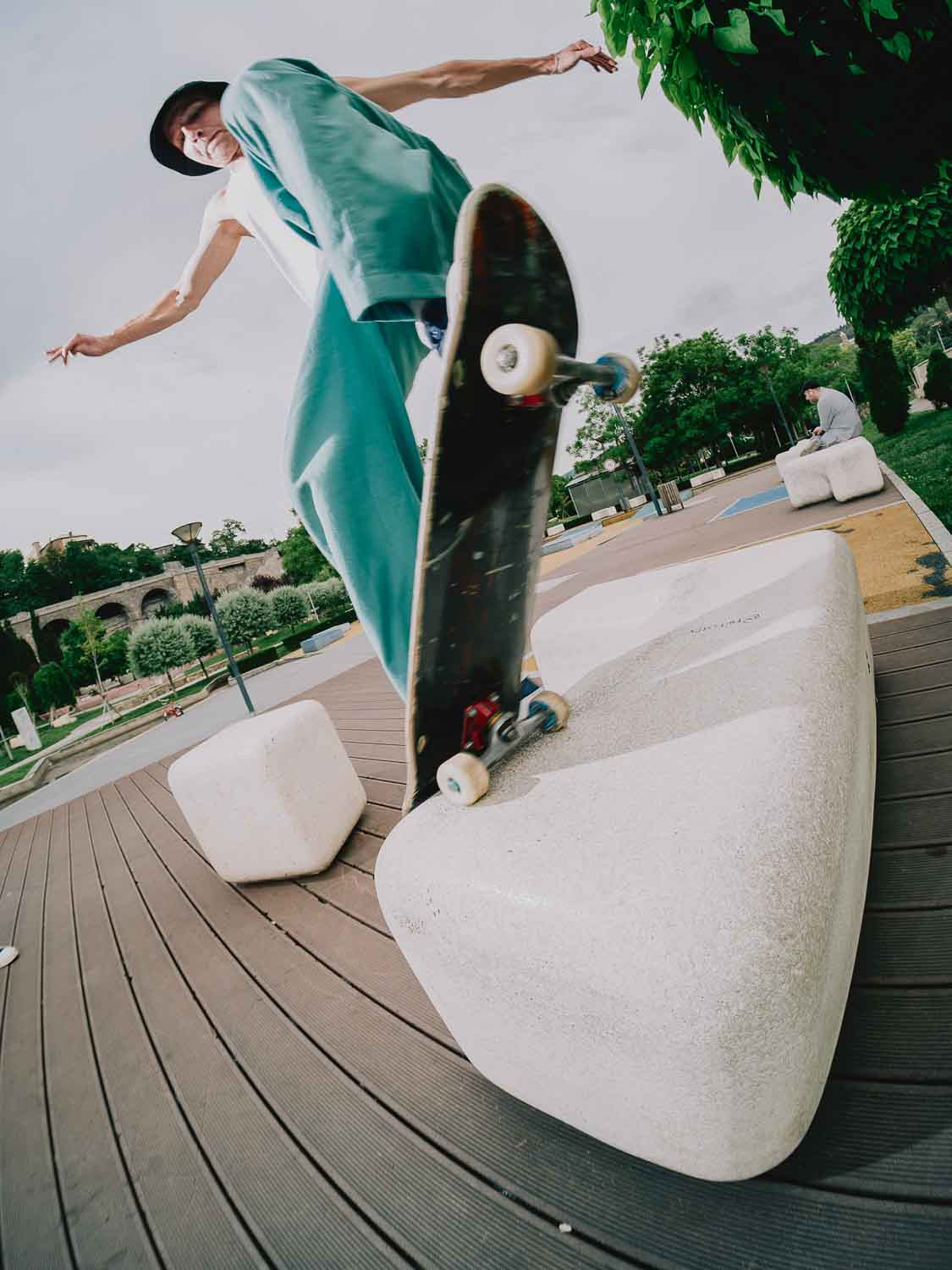 Sasha Stolbov executes a frontside nosebluntslide in Tbilisi, adding to the impressive trick list in the “Puri” video. Photo by Ilya Kelarev.
Sasha Stolbov executes a frontside nosebluntslide in Tbilisi, adding to the impressive trick list in the “Puri” video. Photo by Ilya Kelarev.
Roman’s skatepark construction expertise led to a message from Lexo in the summer of 2020. The offer: join an international team to build a new skatepark in Tbilisi, replacing the existing inadequate one. This opportunity overcame Roman’s COVID-related travel concerns, and he joined Mindwork Ramps, a Latvian skatepark construction company.
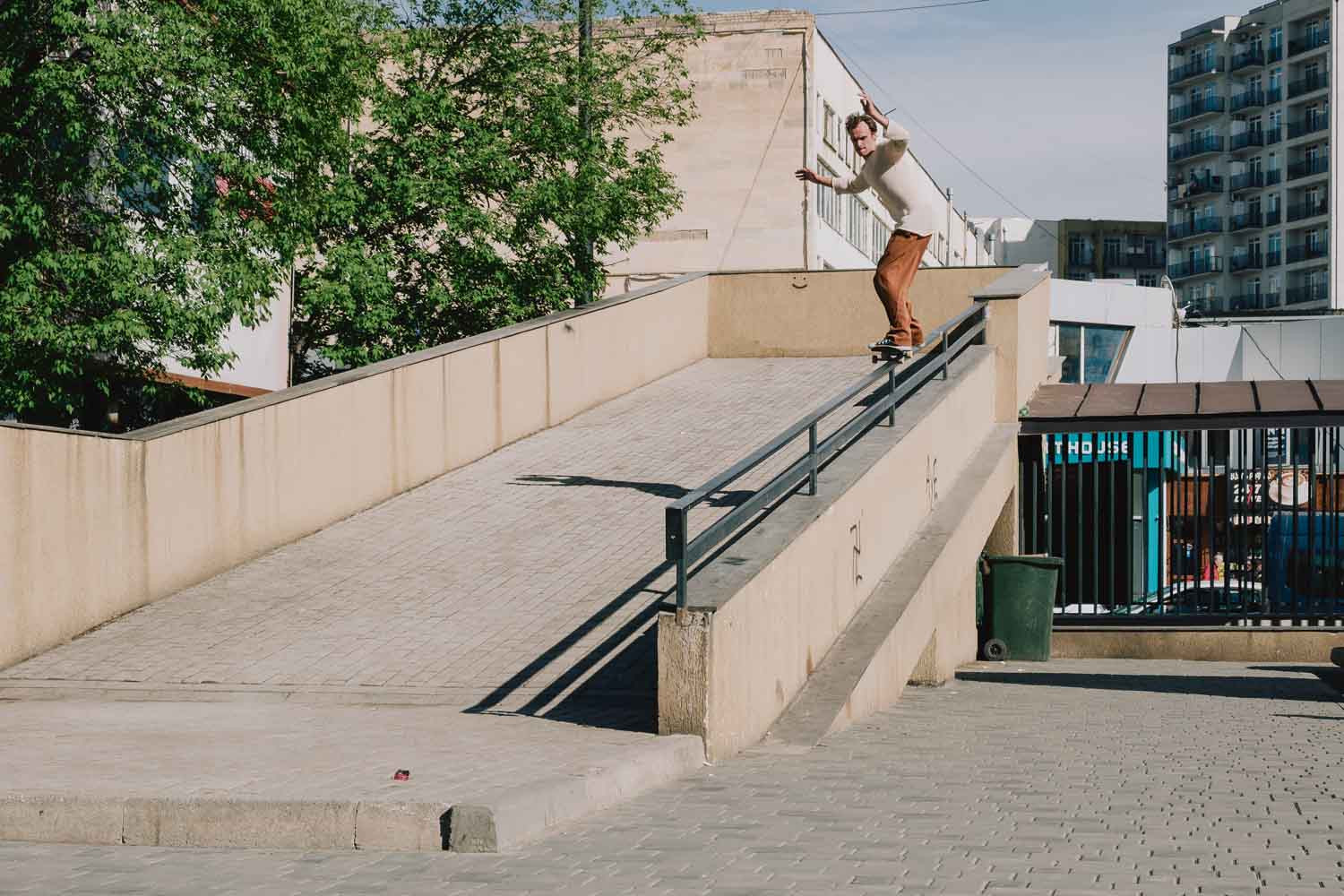 Kim Malygin performs a ride-on 50-50 in Tbilisi, showcasing the diversity of skateboarding styles in the city. Photo by Ilya Kelarev.
Kim Malygin performs a ride-on 50-50 in Tbilisi, showcasing the diversity of skateboarding styles in the city. Photo by Ilya Kelarev.
His four-month stay in Tbilisi in 2020 was transformative. Two months were dedicated to building Tbilisi’s first proper skatepark, centrally located in the historic district. The remaining time was spent skating with locals and further exploring the city. This period solidified friendships and deepened his connection to Georgian culture. His collection of photos of Tbilisi skate spots grew, fueled by optimism for the future. “That time I spent four months in Tbilisi. It took two months to finish the city’s first ever real skatepark, which is perfectly located in the historical centre of the city. The other two months I dedicated myself to skating with the locals, including at the newly built park,” Roman reflects on this pivotal period.
2022 brought unexpected global upheaval. While the pandemic seemed to recede, Roman faced a personal setback – a serious hip injury. Confined to a hospital bed with multiple fractures, he witnessed the unfolding global crisis. “As I remained immobile in the hospital bed I started observing what the hell was starting to erupt in the world. I became scared and I started to fear for my family, my friends and for myself,” Roman shares, revealing the personal impact of global events. His recovery was slow, and skateboarding was put on hold. He turned to woodworking as therapy and relied on cycling for mobility.
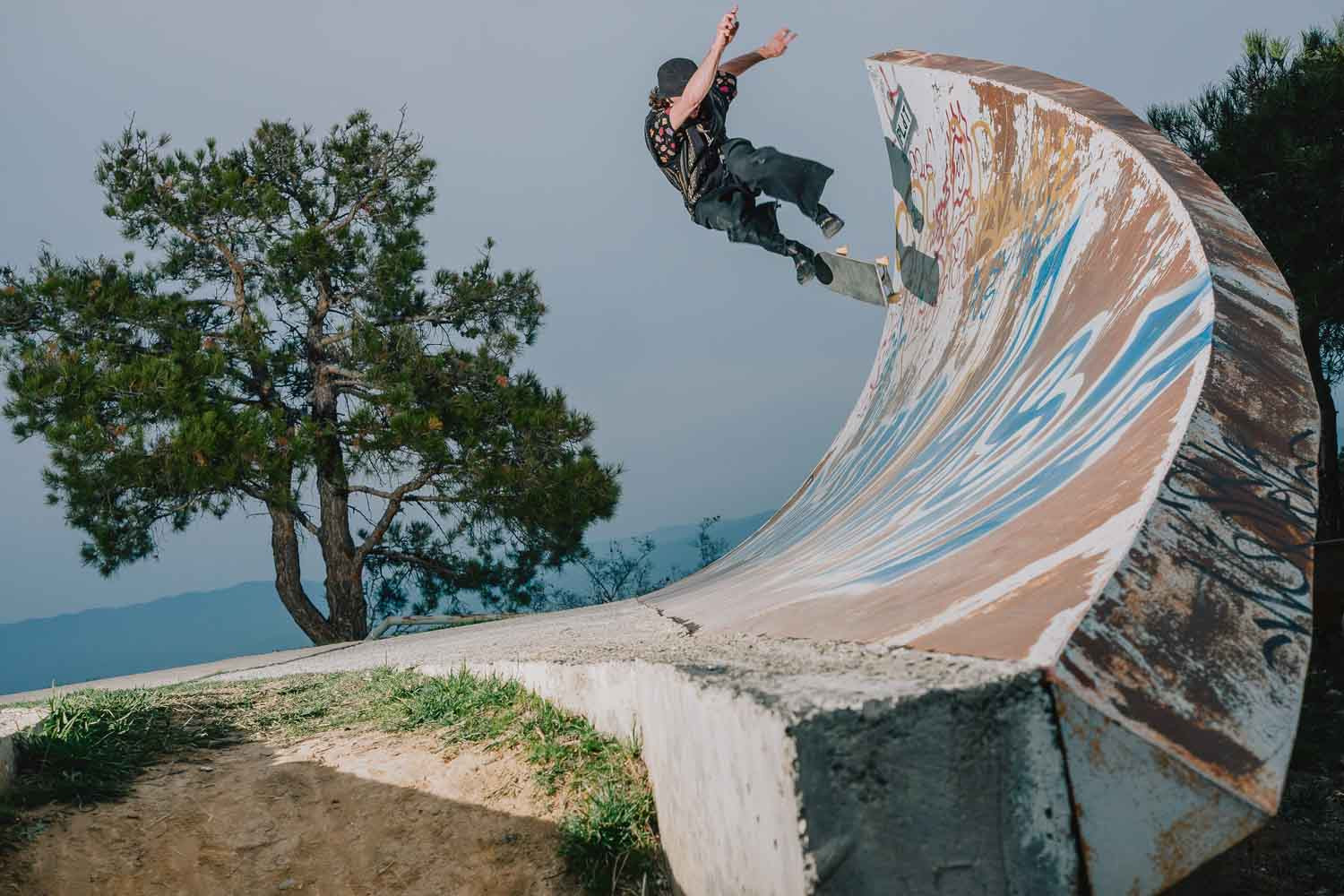 Roman Ivanov lands a caballerial kickflip in Tbilisi, demonstrating his return to form after injury. Photo by Ilya Kelarev.
Roman Ivanov lands a caballerial kickflip in Tbilisi, demonstrating his return to form after injury. Photo by Ilya Kelarev.
An offer to work on a skatepark construction project in southern Russia provided a welcome escape and a return to familiar work. However, his hope for Tbilisi remained. A January call about constructing two more parks in Tbilisi offered a glimmer of optimism amidst regional uncertainty. “Unexpectedly enough in mid-August the construction in Tbilisi was confirmed and I was told to be there by the end of September,” Roman recounts, highlighting the unexpected positive turn. His journey back to Tbilisi was fraught with the tension of the geopolitical situation, with Vladikavkaz, the closest entry point, overwhelmed with people fleeing the region. Arriving in Tbilisi, he immersed himself in construction to find focus and respite.
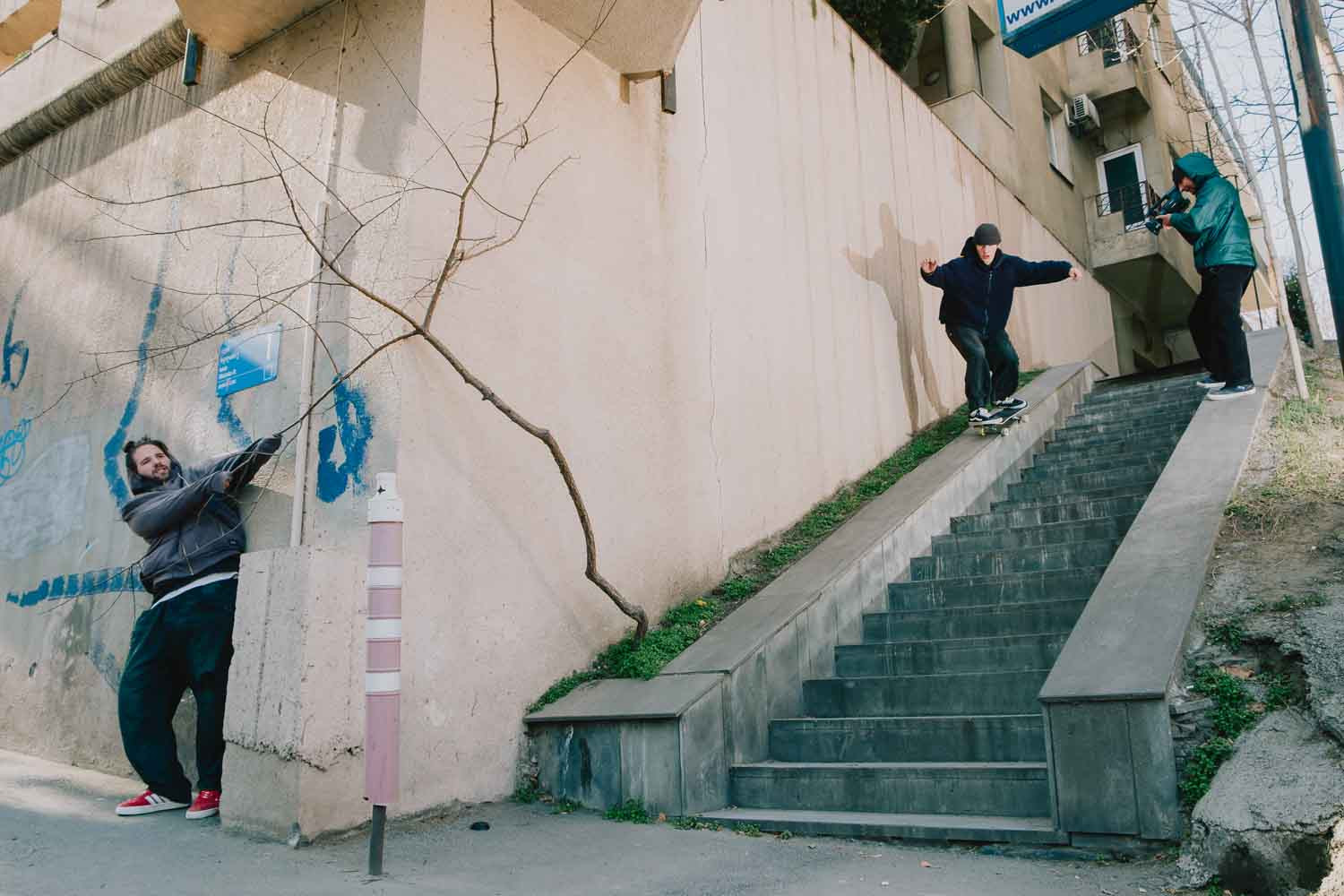 Deni Zakaev showcases a backside 50-50 in Tbilisi, contributing to the city’s reputation as a rising skate destination. Photo by Ilya Kelarev.
Deni Zakaev showcases a backside 50-50 in Tbilisi, contributing to the city’s reputation as a rising skate destination. Photo by Ilya Kelarev.
A message from Dmitry, an old friend, marked the genesis of the “Puri” video project. Dmitry’s arrival in Tbilisi with camera equipment sparked a collaboration born from circumstance. “After a month I got a message from an old friend of mine, Dmitry, to whom long ago I’d told stories about Tbilisi. Dmitry was letting me know that he’d arrived in Tbilisi and that he brought his camera and all the equipment with him,” Roman explains the serendipitous beginning. The “Puri” project wasn’t a long-planned endeavor but rather a response to the moment, a way to create something meaningful amidst challenging times. “As the reader may have already guessed about this project, it was not the fruits of an overall consensus of friends, as I have always imagined and dreamt of, rather it was driven by the situation,” Roman reflects on the project’s origins.
 Roman Ivanov executes an ollie in Tbilisi, capturing the essence of skateboarding in the Georgian capital. Photo by Ilya Kelarev.
Roman Ivanov executes an ollie in Tbilisi, capturing the essence of skateboarding in the Georgian capital. Photo by Ilya Kelarev.
The collaboration with Dmitry began tentatively, revisiting familiar spots. Roman, still recovering from injury, tested his limits. Filming became a way to navigate the uncertainty. They utilized spare moments from construction work, seizing opportunities when weather permitted. The vision for the video evolved – to showcase both classic Tbilisi spots and uncover new, unique locations. “Soon we had the exact understanding of what we wanted the video to look like – we wanted to expose Tbilisi; in a way that had not been done before,” Roman articulates their shared goal.
Victor Yunkov performs a nollie heelflip in Tbilisi, adding to the impressive skateboarding footage captured in the city. Photo by Ilya Kelarev.
Dmitry Kononov further elaborates on the collaborative spirit of “Puri”. “This video, which we’re calling Puri, brought together a bunch of different people who found themselves in a tough time, all in one place,” Dmitry explains, emphasizing the unifying nature of the project. Despite being strangers initially, a shared purpose forged a strong crew. Gratitude for Georgian hospitality is a recurring theme. “On behalf of all, we want to express deep gratitude to the awesome people of Georgia for their hospitality and support. Despite all the challenges, we never felt like strangers in this land,” Dmitry expresses, highlighting the welcoming atmosphere.
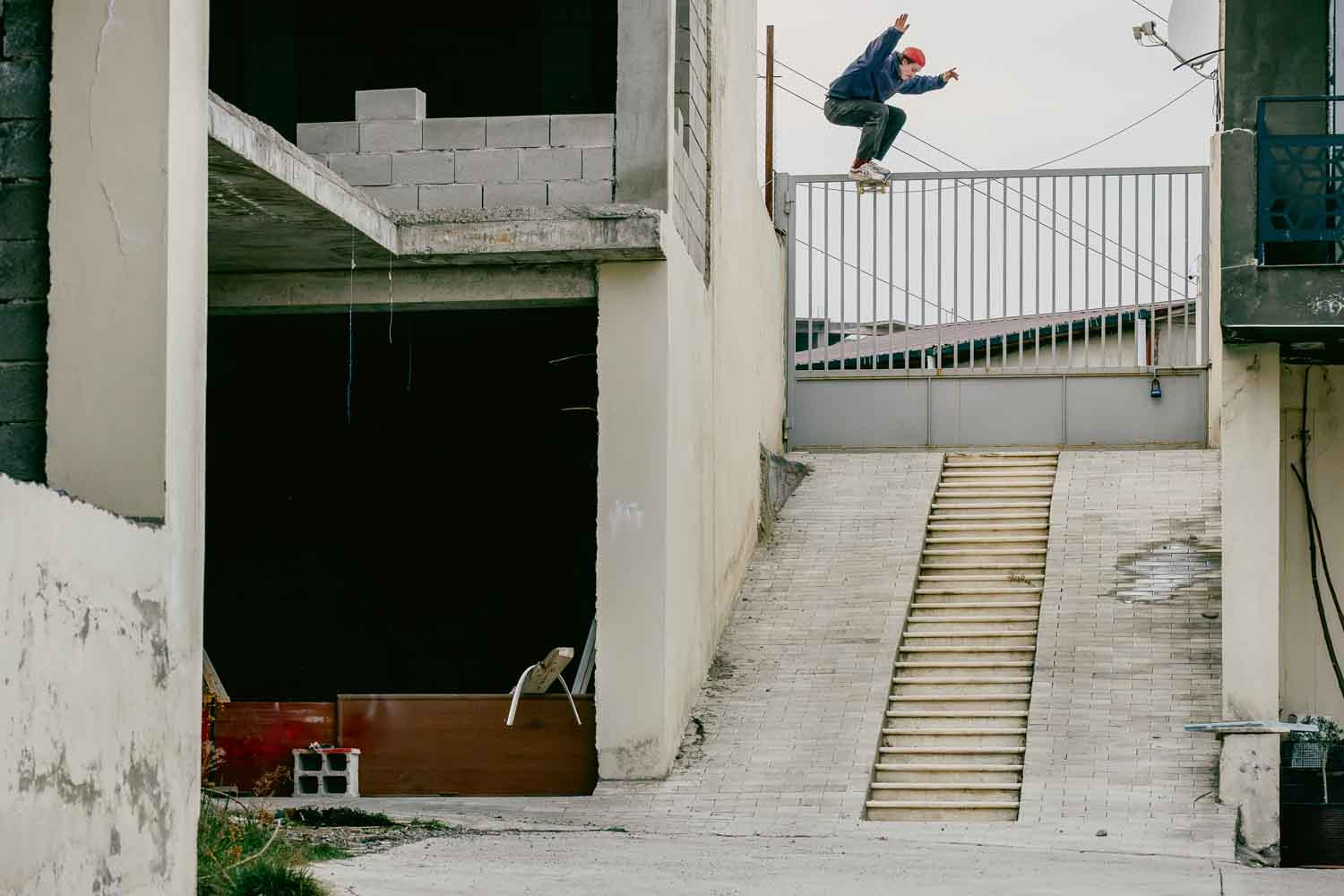 Igor Vorobev performs a taildrop in Tbilisi, showcasing the diverse terrain and skate styles found in the city. Photo by Ilya Kelarev.
Igor Vorobev performs a taildrop in Tbilisi, showcasing the diverse terrain and skate styles found in the city. Photo by Ilya Kelarev.
Respect for the local community was paramount during filming. Introducing themselves to locals and explaining their project fostered positive interactions. “Here, it’s not cool to cause a ruckus on the streets, especially in quiet neighbourhoods. So every time we rolled into a new spot, we introduced ourselves to the locals, shared who we are and what we’re about,” Dmitry details their approach to community engagement. This respect often led to unexpected hospitality, further enriching the experience. “It often happened that they treated us to wine, and after making friends, we got an incredible energy boost on top of nailing sick tricks. That’s the key to creating a rad atmosphere at Georgian spots,” Dmitry concludes, encapsulating the essence of skateboarding in Tbilisi – a blend of challenging spots, warm hospitality, and a blossoming skate scene. “That’s Georgia for you: good-hearted, friendly people, a mellow climate, and gnarly skate spots. Thanks Georgia! დიდი მადლობა”
“Where have all the flowers gone?” In Tbilisi, they haven’t disappeared; they’ve transformed into a thriving skateboarding scene, blooming in unexpected places, nurtured by resilience, global connection, and the unwavering spirit of Georgian hospitality. The “Puri” video is a testament to this vibrant evolution, capturing the energy and spirit of a skate community that has truly blossomed.

